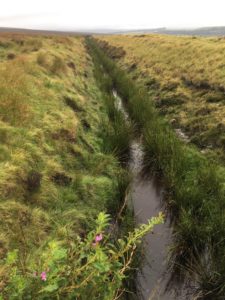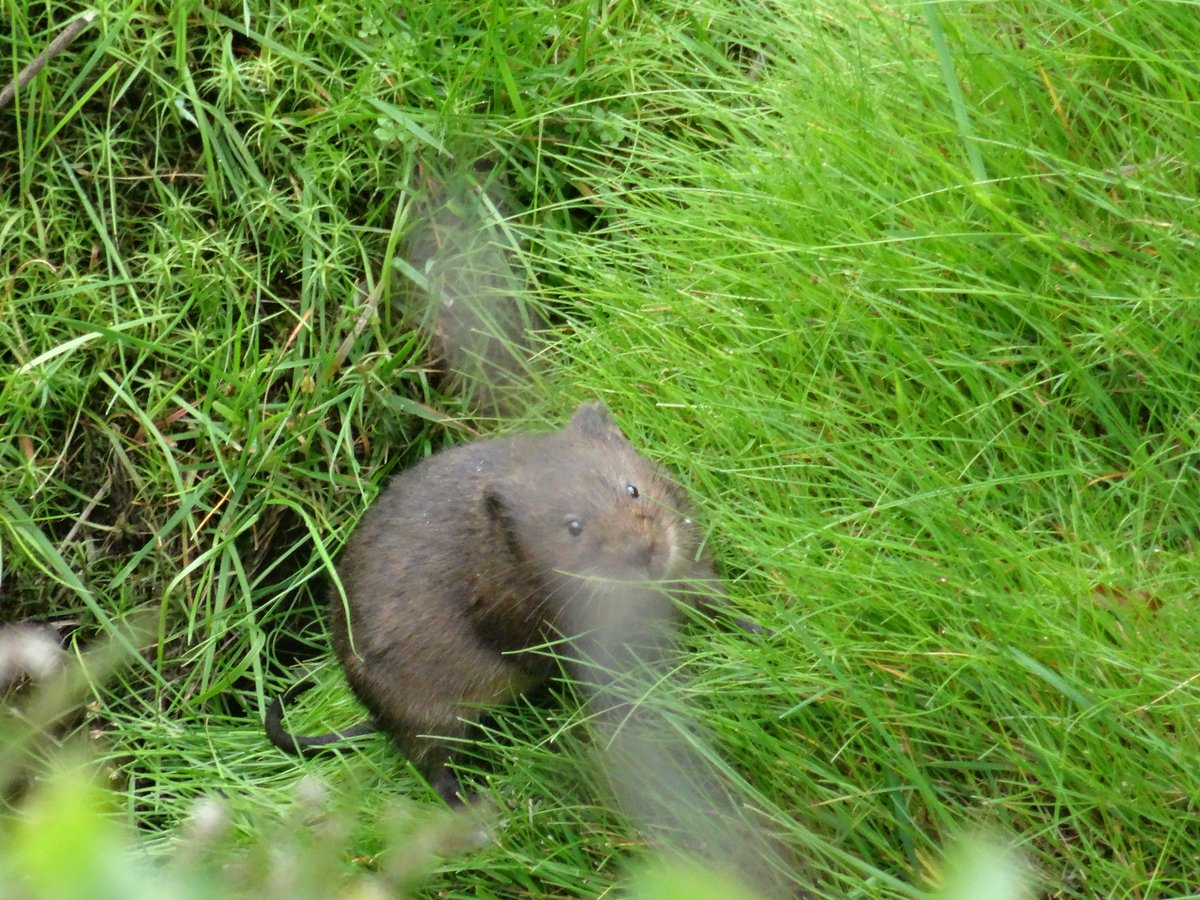 This summer Sheffield Lakeland Landscape Partnership (SLLP) received permission from Natural England to go ahead with a water vole survey around Redmires Reservoir and nearby Hammond’s Field. With further permissions from the landowners Sheffield City Council, Yorkshire Water and Sheffield & Rotherham Wildlife Trust, LP Community Ecologist, Julie Riley, was joined by a small team of volunteers to commence the surveying. Across roughly 9km of watercourses they undertook hand searching along the shallow drains and banksides looking for the field signs of water vole which are; latrines and droppings, burrows and runs, feeding stations comprising piles of cut vegetation and on a few lucky occasions, sightings of feeding or swimming water vole.
This summer Sheffield Lakeland Landscape Partnership (SLLP) received permission from Natural England to go ahead with a water vole survey around Redmires Reservoir and nearby Hammond’s Field. With further permissions from the landowners Sheffield City Council, Yorkshire Water and Sheffield & Rotherham Wildlife Trust, LP Community Ecologist, Julie Riley, was joined by a small team of volunteers to commence the surveying. Across roughly 9km of watercourses they undertook hand searching along the shallow drains and banksides looking for the field signs of water vole which are; latrines and droppings, burrows and runs, feeding stations comprising piles of cut vegetation and on a few lucky occasions, sightings of feeding or swimming water vole.
Thanks to National Lottery players water vole (Arvicola amphibius) is one of six species being supported through the Sheffield Lakeland Landscape Partnership which have found their home along the Conduit, ditches, drains and rushy run offs at Redmires. This native UK mammal has recently been classed as Endangered on the Mammal Society’s Red List, as its numbers continue to decline rapidly in England with an estimated 47% population decline and a contraction of occupied areas by as much as 80% between 1998 and 2016. This is thought to be due to a mixture of loss of suitable sites, fragmentation and isolation of existing water vole populations, predation by the non-native mink and factors such as droughts and flooding.
Julie told us about this important work;
‘The water vole population within the Sheffield area follows the national trend, with the animal functionally extinct on all of the low lying watercourses that would have formerly been their territory. The population within the SLLP area is now restricted to a small number of isolated upland drains and ditch systems where mink have not successfully colonised.
One such site is the feeder conduit leading in to the Yorkshire Water owned upper reservoir at Redmires, which has an established population of water vole for much of its length. The conduit is very close to the Sheffield and Rotherham Wildlife Trust reserve Hammond’s Field.
Sheffield City Council, Yorkshire Water and Sheffield and Rotherham Wildlife Trust agreed that an up to date survey of watercourses around the reservoirs would help identify areas of existing water vole populations, and look at places where the ditches and drains could be improved to provide more habitat for water vole to expand into. ‘
Originally the surveys were going to take place in April, but they weren’t allowed to take place during the Covid-19 restrictions. As things eased a group of 14 volunteers were trained in what to look for, and then assigned 500m stretches to survey and map during August and September. With roughly 9km of drains and ditches to check, Julie couldn’t have done this without the volunteers, who donned wellies and waders, got used to getting excited at finding water vole poo and occasionally got wet feet!
The results of the surveys will be used to target habitat improvements in conjunction with landowners. At Hammond’s Field, they hope to deepen the drain and pond, and put ‘smoots’ (gaps) in dry stone walls so that water vole, who can move over land when looking for territory, will be able to reach the new habitat.
Dave Aspinall, Countryside Service Manager at Sheffield City Council, represents one of the landowners on the site and welcomes the survey work. He said we need to use the information to help steer future works and to build on the improvements that the City Council and Yorkshire Water had started , which have included fencing specific areas to limit disturbance to the water vole habitat from dogs.
As a result of the survey work the City Council, the Wildlife Trust and Yorkshire Water will be assessing the potential for habitat improvements on their land to further improve water vole habitat.
Discover more about the Sheffield Lakeland Landscape Partnership here.
